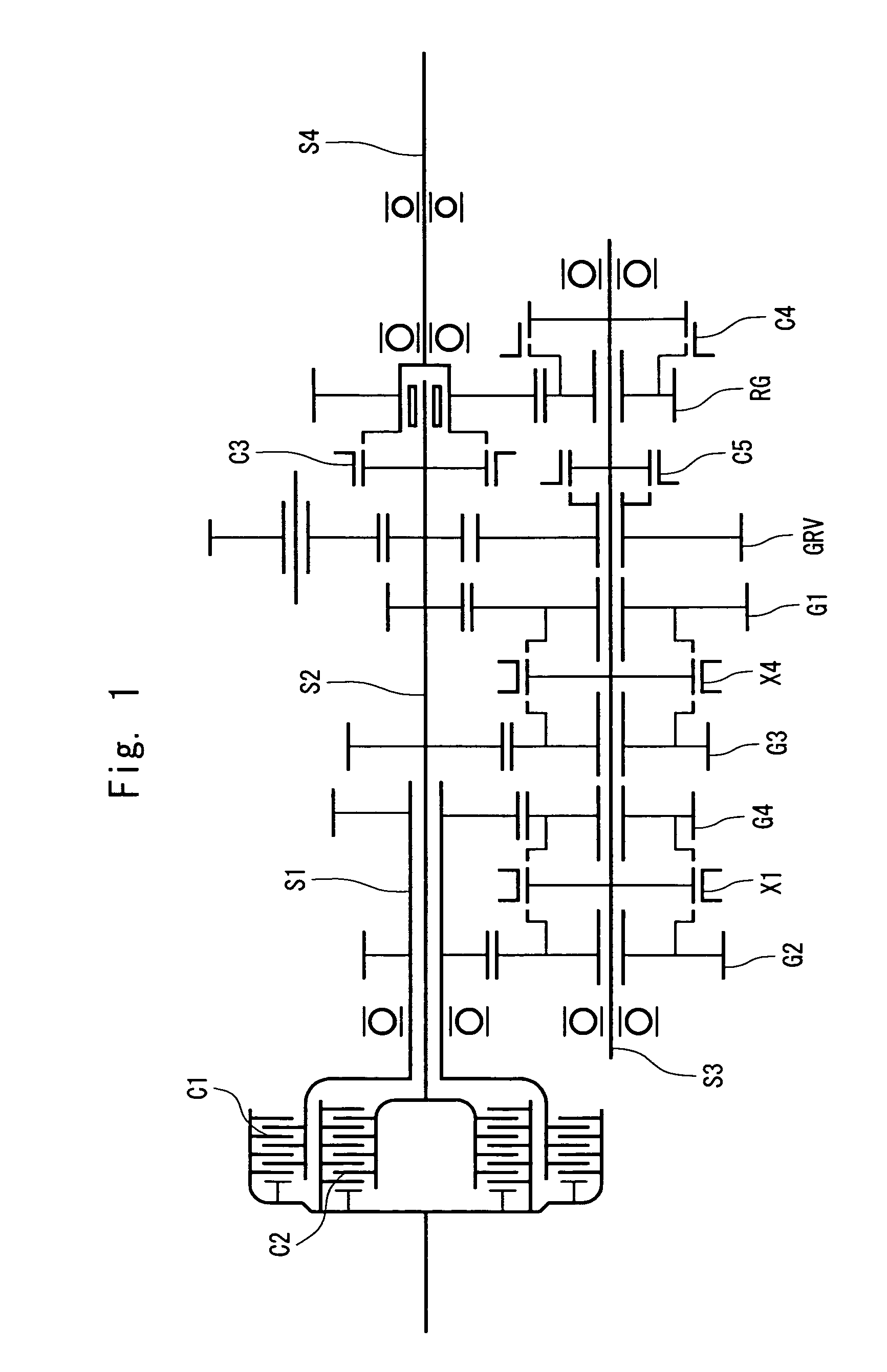Output shaft reduction-type dual clutch transmission
a transmission and transmission technology, applied in the field of transmission, can solve the problems of loss of power transmission, high cost, and large shock of change at the time of shifting transmission steps, and achieve the effect of reducing the siz
- Summary
- Abstract
- Description
- Claims
- Application Information
AI Technical Summary
Benefits of technology
Problems solved by technology
Method used
Image
Examples
Embodiment Construction
[0028]The dual clutch transmission of the invention will now be described with reference to the drawings. FIG. 1 is a view schematically illustrating the whole dual clutch transmission of the present invention, FIG. 2 is a view illustrating, in detail, the vicinities of an output shaft reduction gear train on which the intermediate shaft connection clutch of the invention is placed, and FIG. 3 is a view illustrating a transmission step shifting device. In these drawings, the parts corresponding to those of the conventional dual clutch transmission shown in FIG. 5 are denoted by the same reference numerals.
[0029]The basic structure and operation of the dual clutch transmission of the present invention are the same as those of the conventional dual clutch transmission of the output reduction type described with reference to FIG. 5. That is, as shown in FIG. 1, the dual clutch transmission has a first clutch C1 and a second clutch C2 arranged in concentric, the first clutch C1 being co...
PUM
 Login to View More
Login to View More Abstract
Description
Claims
Application Information
 Login to View More
Login to View More - R&D
- Intellectual Property
- Life Sciences
- Materials
- Tech Scout
- Unparalleled Data Quality
- Higher Quality Content
- 60% Fewer Hallucinations
Browse by: Latest US Patents, China's latest patents, Technical Efficacy Thesaurus, Application Domain, Technology Topic, Popular Technical Reports.
© 2025 PatSnap. All rights reserved.Legal|Privacy policy|Modern Slavery Act Transparency Statement|Sitemap|About US| Contact US: help@patsnap.com



